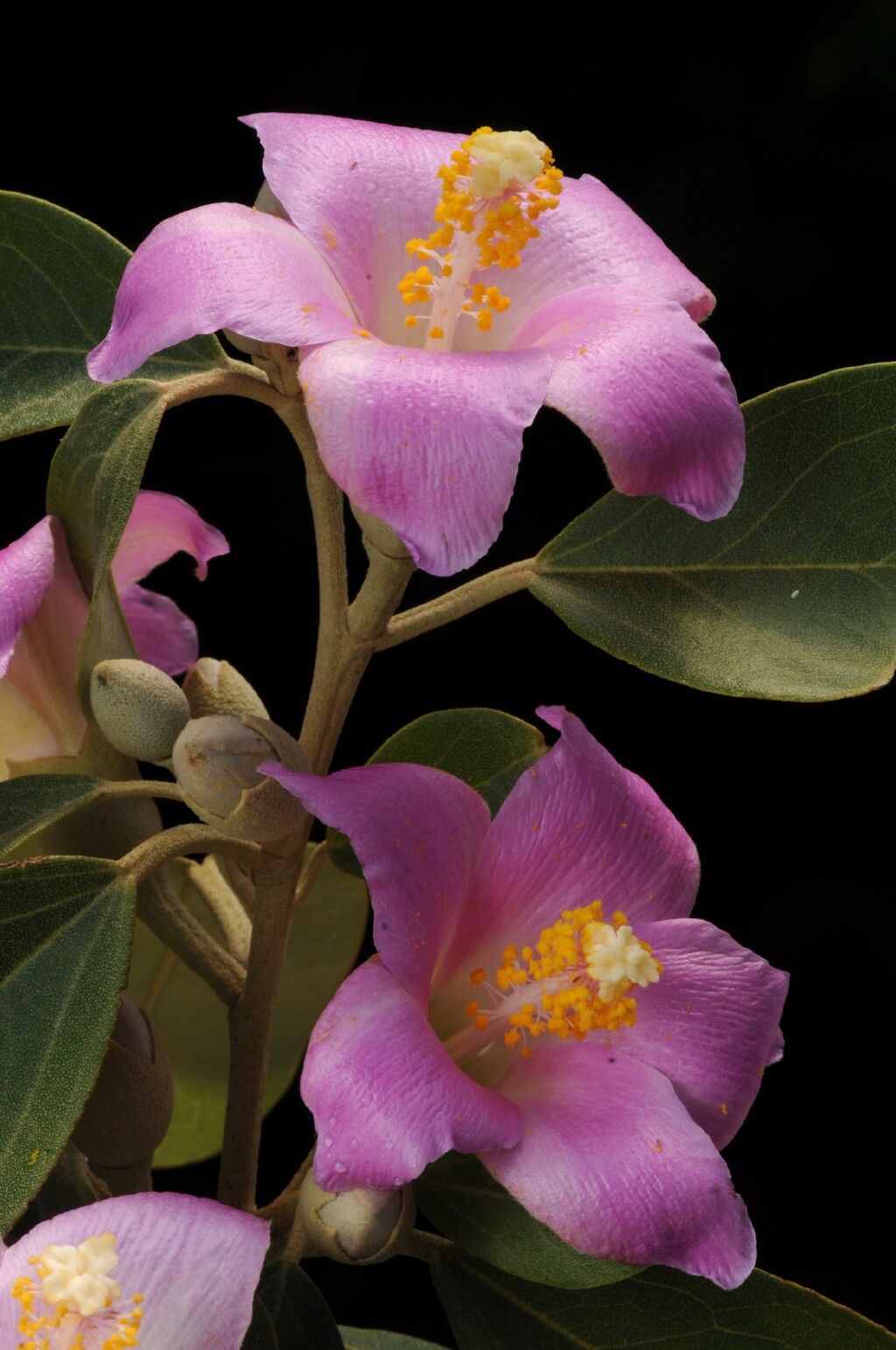Lagunaria patersonia
(Andrews) G.DonTree to 20 m high with minute, scurfy, often fringed, appressed scales. Leaves broadly elliptic to lanceolate, (4–)5–9(–15) cm long, (1.3–)2–3.5(–5) cm wide; apex obtuse or rounded; lower surface pale, densely covered with appressed scales. Flowers with pedicles 1–2 cm long; epicalyx reduced to a ridge surrounding the base of the calyx; calyx cup-shaped, 12–15 mm long densely scaly, lobes broadly triangular, 2–3 mm long; petals pink to rose-lilac, yellow near base, rotate, 4–4.5 cm long. Capsule spherical, 2–3 cm long, elongating to c. 5 cm long at dehiscence, septae lined with irritating hairs; seeds orange-red to brown, 5–7 mm long. Flowers Nov.–Feb.
VVP, GipP, WaP, NIS. Endemic to Lord Howe Island, and Norfolk Island. Naturalised in WA, SA, NSW. Sparingly established usually in coastal or near coastal areas of southern Victoria.
Widely cultivated, and often grown in Victoria as a street tree.
Plants native to Queensland with an early shedding, cup-shaped epicalyx were previously treated as L. patersonia subsp. bracteata Benth. These are now recognised as a distinct species, L. queenslandica Craven.
 Spinning
Spinning



